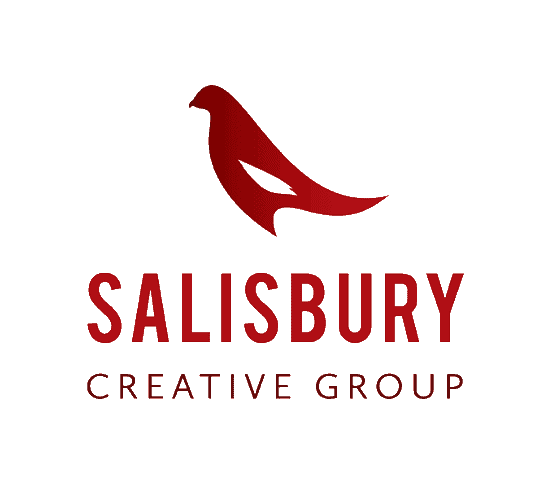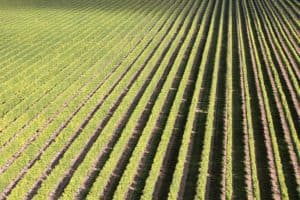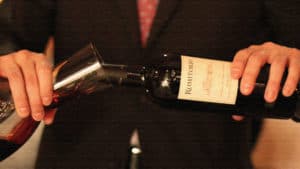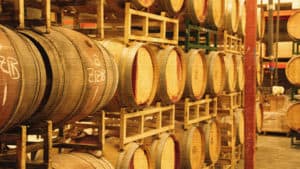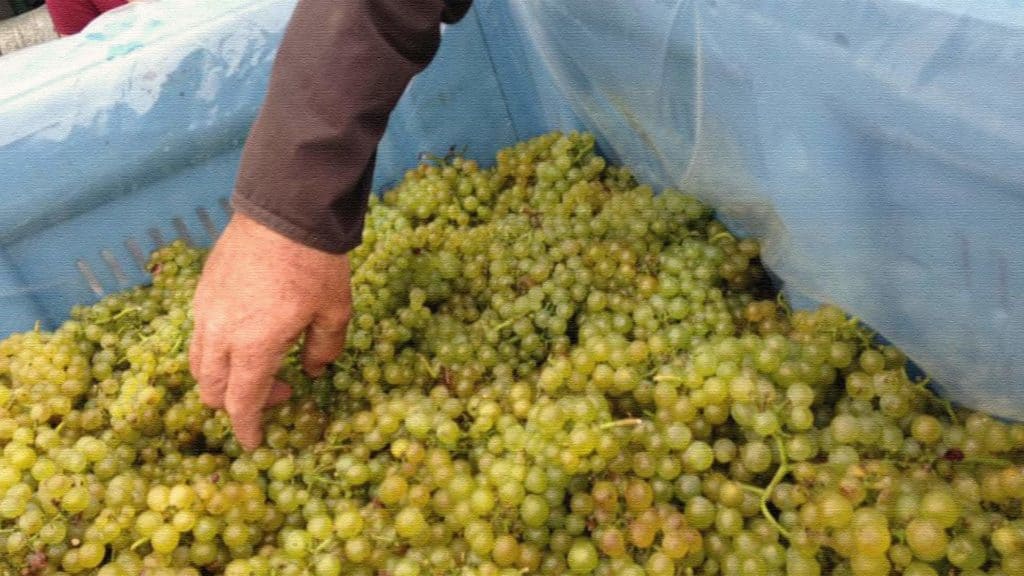
We are more than halfway through another selling year. The landscape for selling wine online has become ridiculously competitive thanks in no small part to the pandemic. If you desire to sell MORE wine online in the remaining months of the year and move into the new year with confidence, this article is for you!
If you are still operating your ecommerce business the same way you did in years past, you are in serious danger of being left behind.
The beautiful thing about the advice below, is it is one hundred percent within your control to implement and none of it is expensive. There are so many other things about making and selling wine that you cannot control. So, do yourself a favor and take a hard look at what you are doing now and take the steps outlined below to upgrade your strategy.
Get into the right mindset
One of the first things you will need to do to sell wine online like a pro is to shift your mindset.
And here is the mindset:
You find and attract email subscribers using SEO and Facebook/Instagram lead ads; you SELL using email marketing.
This is a big shift from how most people attempt to sell wine online. The vast majority of wineries use email to send out boring newsletters that very few people read and they run self-glorifying Facebook and Instagram ads that invite users to “shop now” or “buy now.” These strategies are doomed to failure.
The foundation of this NEW mindset is accepting the truth that people do not come to Facebook to research products and services to purchase. That is the realm of Google and Amazon. People come to Facebook and Instagram to be entertained and to engage with their friends and family.
But, while they are on their feed wine drinkers WILL engage with wineries “ads” IF those ads entertain, inform, and educate.
The role of social media in the online wine sales game
Most people greatly overestimate their ability to convert social media fans & followers into paying customers. If you want to get a good grasp of your selling potential, do not look at the number of fans & followers you have but, instead, look at how many engaged email subscribers you have.
You absolutely need to have a vibrant, growing social media presence in order to build brand awareness and engage with potential customers. But, the SALES will happen mostly via a sound email marketing strategy. This is not an either-or situation but a both-and scenario.
So, keep doing whatever is working to leverage your social authority but avoid the trap of thinking your posts are going to move the needle on sales.
Once you accept that your “feeds” provide a very differentiated role in your online marketing efforts from your advertising, you are well on your way to having more sales success.
Wineries with small budgets and limited resources are especially vulnerable to this reality. It is easy to waste money on wine ads on Facebook and Instagram that do little more than make “noise” on the social feeds of their would-be customers.
The bottom line is a large social media following is nowhere near enough to enjoy sales success.
Success Checklist
Here is a simple checklist you can use to make sure you have everything in place to be wildly successful selling wine online. In the sections below we will dive deeper into each of these critical success factors. (Click on the topics below to navigate to the referenced sections).
- Frictionless user experience for online wine buyers
- The proper email marketing software
- Streamlined email signup forms on multiple locations on your website
- Auto-response welcome emails for web signups
- Personalized communication via email
- Compelling lead magnets
- Email nurture sequences for new leads generated by your lead magnets
- A solid email marketing strategy for your drip/broadcast email campaigns
- Regularly purge your “cold” subscribers
A frictionless user experience for online wine buyers
The competition for online wine buyers is fierce, fierce, fierce! And today’s online shoppers are incredibly impatient when it comes to shopping online.
Wineries large and small must do everything in their power to remove all obstacles to a seamless, efficient shopping and checkout experience.
A great place to start is to improve your site speed. There are three things to consider to make sure your website visitors are able to see and interact with your content easily:
- Page load time.
- Execution speed of website events you want to track such as button clicks.
- How quickly the browser parses the document and makes it available for user interaction.
For more on this topic, Google Analytics provides a great help document here.
A lack of adequate site speed is a huge reason why people bounce off sites. Wineries need to monitor their bounce rate fiendishly. Aim for seventy percent or less as a good rule of thumb.
The bounce rate is calculated when someone visits a single page on your website and does nothing on that page before leaving. It is quite shocking how FEW wineries even monitor this! Do not be among them, please!
If you want to sell wine online like a pro in today’s hyper competitive environment, you simply MUST invest in an SEO tool such as Yoast or SEMRush and learn how to use them.
Since more than half of all your online wine orders will be placed using a mobile device, it is critical that you optimize the mobile experience for users. Take the time to visit your own site regularly using your own mobile device so you can experience it for yourself.
Be especially wary of making users click on too many things to get their order placed.
One final note on user experience: please make sure all your email signup forms contact as few fields as possible. Every field you add to a form is likely cutting your conversion rate between eight percent and fifty percent. The best practice is to ask only for the user’s first name and email address. You can always collect other data points as your users interact with your content on an ongoing basis.
The proper email marketing software
Whatever email marketing software you use MUST allow you to do ALL of the following things:
- Utilize custom “forms” that can be embedded anywhere on your website (ideally in multiple places)
- Build automations (pre-defined rules to trigger personalized email messages based on specific actions customers take) such as an automated “welcome email” when they first join your list.
- Create custom landing pages
- Integrations with your Facebook Ads – especially your Facebook Lead Ads (you may need a too like Zapier to help)
- Leverage click segmentation in order to automatically add “tags” each time a user takes an action.
- Provide thorough and detailed user engagement reports
Many wineries utilize “full stack” email tools that are included in their ecommerce platforms. If you are among these users, make sure your email marketing tools can do all six things listed above.
The way you need to use email marketing software today goes WAY BEYOND sending out newsletters and wine club pickup announcements. So, educate yourself and make the necessary upgrades. Compared to other ways to spend your marketing dollars, email software is cheap!
Streamlined email signup forms on multiple locations on your website
There are two key things you need to get right when it comes to email signup forms embedded on your website:
- Keep required fields to an absolute minimum (first name and email address – that’s it).
- Give people a very compelling reason to sign up
Let us tackle item number one first. It is very tempting to try and obtain key information such as last name and zip code. But the conversion rate drops dramatically once you start asking for more than just first name and email address.
There is plenty of time to gather more information LATER in the customer journey. Your goal should be to make it as EASY as possible to subscribe. It makes a huge difference over time!
When it comes to providing compelling reasons to sign up, there is NOTHING WORSE than simply saying, “Join our email list.” Consider that there are over 1.8 BILLION websites on the internet and they all are asking for people’s email addresses. If you want to sell wine online like a pro, you are going to have to do MUCH better than that!
Spend a little time with your team brainstorming what compelling reasons you might offer potential subscribers. If you get stuck, take a look at a few ideas to get the cerebral blood moving through your noggin.
- Be the first to know about limited releases and special offers.
- Get special offers available only to our subscribers.
- Be first in line for our highly allocated wines.
- Keep up to date with special events.
Providing compelling reasons to subscribe will have a dramatic effect on your conversion rates!
Auto-response “welcome” emails for new web signups
If you are fortunate enough to get wine lovers to visit your website AND they sign up to be on your email list, those users should have the red carpet rolled out to them. An automated welcome email can achieve this handsomely.
It is shocking how many wineries have NO auto-response set up for new subscribers. But, that is good news for the rest of you because it will provide a competitive edge.
Your welcome email should include ALL of the following components:
- Thank them for signing up
- Welcome them heartily and sincerely (not in a smarmy, used-car-salesman way).
- “Show them around” by highlighting some of the unique features of your website and inviting them to click on your social links
- Your welcome email should contain several click segmentation links that automatically assign tags to their user profile.
Let’s say one of the most popular pages on your website is your unique and thoughtful food & wine pairing guide. Include a link to that page in your welcome email. When a user clicks on that link, they automatically receive the tag, “food + wine pairing.”
The best thing about automated welcome emails is that they are just that: automatic. They work 24/7 and set the stage for deeper engagement over time.
Personalized communication via email
Most people think “newsletters” and email “blasts” when they think of email marketing strategies. There is SO much more to an effective email strategy than this!
ALL of your email communications with your subscribers can and must be personalized. It should be a rare occurrence that you send the same email out to all subscribers. A much better way to build relationships and trust is to send communications to much smaller groups of people based on very specific interests.
Let’s say you have a tag called, “red wine lovers” and another called, “has visited the winery.” The way you would speak to each group should be highly customized!
When you sit down to write the correspondence, write as if you are writing to just one person. This makes a huge difference!
Another great tip to help you sell wine online like a pro is to keep your emails as short as possible and refrain from using images. People will READ a short, concise email and pass over something that screams TLDR.
The objective of email marketing is to slowly and patiently build a relationship with your subscribers over time. That is impossible to achieve if no one reads your emails!
Compelling lead magnets
If there is one online marketing tactic that gets overlooked by most wineries it is certainly this one. Lead magnets allow you to engage in a “pull” strategy versus a “push” strategy that results in MUCH HIGHER conversions.
If you bring new subscribers onto your list in a highly-targeted, well-qualified way, your chances of them actually buying something increase substantially! And compelling lead magnets are just the ticket for this.
Lead magnet offers are everywhere on people’s Facebook and Instagram feeds. Once you start paying attention, you will see them everywhere. Wineries can leverage these powerful top-of-the-funnel tools too!
A lead magnet is a piece of content that is valuable enough to exchange for a person’s first name and email address. Shoppers guides, educational pieces, checklists, and cheat sheets if conceived of and created properly can help enroll hundreds of new subscribers a month.
What your email list needs most is a continual stream of NEW subscribers! New subscribers are much more likely to engage in your future content and they will not stay new forever. So, make the most of it. Do yourself a favor and learn how to leverage this powerful strategy! For more on this topic, check out this free webinar recording called, “Leads: the hot “new” customer acquisition strategy for wine & spirits.”
Email nurture sequence for new leads generated by your lead magnets
In order to convert new subscribers to paying customers, you are going to have to patiently build a relationship with them over time. The best way to do this AUTOMATICALLY is with email nurture sequences.
You set up a series of emails that fire off automatically when someone opts in to one of your lead magnets. And here is the formula you should follow:
- Email # 1 to be sent immediately when they opt in to your lead magnet offer. This is essentially a specialized “welcome email” (see section above called, “auto response welcome emails”).
- Email #2 to be sent 2-3 days after email #1. The goal of this email is to add more value based on the nature/topic of the lead magnet they opted in for. DO NOT SELL YET! Just add value. It is wise to start using your click segmentation here. Here is an example: Let’s say you offered a white wine & cheese lovers pairing guide as your lead magnet. In emails #2 and #3, you can provide ADDITIONAL content that educates and informs about pairing wine with cheese.
- Email #3 to be sent 2-3 days after email #2. Once again, you want to add more value related to the nature/topic of the lead magnet they grabbed earlier. DO NOT SELL YET!
- Email #4 to be sent 2-3 days after email #3. Here is your opportunity to put some kind of “soft” offer in front of the new subscriber. If you have refrained from trying to sell them something too early in the relationship AND they have opened all the emails thus far in the nurture sequence, you stand a much better chance of converting them into a paying customer.
Once they have completed the nurture sequence, you can then utilize your drip/broadcast email marketing strategy.
A solid marketing strategy for your drip/broadcast email campaigns
In theory, you should not send out any emails to these new subscribers until they have completed the nurture sequence. Resist the urge to start blasting your monthly newsletters (or anything else) to these newbies.
There is a VAST difference between sending out well-segmented broadcast emails on an ad-hoc basis versus sending everyone your newsletter.
A quick side note on newsletters. Only people who are truly interested (run an engagement report) should be receiving your newsletters. You also need to be aware that newsletters are a very old-school email strategy. For more on this topic, check out this recording of a webinar called, “The Anti Newsletter Email Strategy.”
If you want to truly delight and engage your audience of subscribers, create a calendar of “broadcast” emails that are intended to be sent to small groups of people based on their interests. This is where “tags” come into play.
Even better, wait until you have something exciting to say or offer and create an ad hoc broadcast. Look for your open rates to soar once you get the hang of this!
Regularly purge your cold subscribers
No doubt some of you reading this are going to stiffen up at the thought of intentionally deleting hundreds of “cold subscribers” but please keep reading. This is about quality not quantity.
The best definition of “cold subscribers” is someone who has not opened or clicked an email within the last ninety days. They are not opening your emails now and they are highly unlikely to open any in the future.
But, rather than just delete them straight away, try following a cold subscriber re-engagement workflow. This article from ConvertKit will help immensely.
No matter how compelling and interesting your content is, there are going to be people who lose interest. You need to know who these people are and deal appropriately with them.
Working only with highly engaged subscribers will do several marvelous things for you. It will for sure improve your open rates. It’ll lower your email software rates (MailChimp’s fees, for example, are based on the size of your email list). It will also breath fresh wind into the sails of your creativity. There is nothing as fun as communicating with people who really want to hear from you!
Now is the time to separate yourself from the pack
There are well over ten thousand different wineries all over the country trying to do exactly the same thing you are trying to do which is sell wine online.
The good news for you is MOST of them will NOT do anything differently than they have always done.
YOU, however, now possess the guidance to take your ecommerce sales to the next level.
None of the recommendations in this article are expensive. But, they do require a firm commitment to learning new things.
At Salisbury Creative Group, we have helpful articles on our website and over sixty videos on our YouTube channel that are FREE and will assist you in your journey.
If you are interested in something more personalized in order to fast-track your goals, simply click here to see info on our online program!
Good selling!
